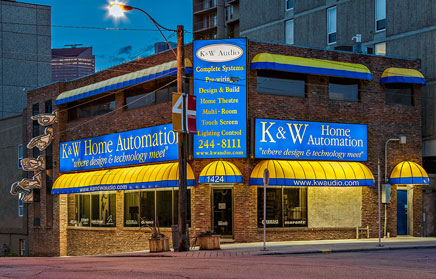TIP #16:
The word Amp is used generically to describe the power unit in an audio system. However, it can refer to several different types of components. This tip describes the uses and benefits of the Amplifier (Amp). Firstly, what is an Amplifier? An Amplifier receives a low voltage signal (measured in millivolts) emanating from a source component (e.g. Tuner, CD, Tape, VCR, Phono, etc.) which is then processed through a transformer, output devices and other “techy bits”, after which the signal power has been increased thousands of times. This high power output signal (now measured in watts) is capable of changing the magnetic field in the speaker’s drivers, thereby moving them, creating sound. This is all that is required of straight Power Amplifier. It’s physical appearance is simple, generally with just a single on/ off button on the front panel. If we need to listen to only one source component, (e.g. CD) and it has an output control (to allow volume changes) it will work very well. However, if we need to select the input source from several different components, and adjust the sound’s tonal quality and balance, another box is needed before (pre) the Power Amp. This source selector is referred to as a Preamp. Since most us will need to select between several components, why not combine the Preamp and the Power Amp into a single chassis? It would obviously be less expensive to produce (one box rather than two), we can combine transformers, use just one line cord and put everything on one circuit board. When the Power and Preamp are integrated into one box it is called, strangely enough, an “Integrated Amplifier”. Most people will want a tuner for radio reception, so why not include one in the box? It’s circuitry is relatively simple, which means that it will not occupy much space, and since we can do away with the box, transformer, and circuit board, of a separate tuner, it will make the unit less expensive than a comparable Integrated Amplifier with a separate tuner. A box containing a tuner to receive radio stations, combined with an Integrated Amplifier equals one Receiver! So, why not put everything in one box, Tape, VCR, CD… wait a minute! You now have junk. As we combine various components into a common chassis, we add noise, and that assumes that we are using the same quality components as we would had each piece been separate (which in a cost conscious design is not the case). Music (lets not lose sight of the reason for all this) becomes flatter and less dynamic with the addition of extra noise, especially when introduced at a Pre-Amplifier level. This is because any changes made to the signal by all those components using common parts and paths, will be amplified thousands of times by the Power Amp. So, when comparing an Integrated Amp with a separate tuner, how much of a compromise is a Receiver? Generally, there is no pat answer. A well thought out Receiver design using high quality parts, separate power circuitry for pre and tuner functions, and a power supply equal to that found in a comparable Integrated tuner combination, can sound very close. The cost differential can more than offset the sonic difference. However, few things can “muck up” (technical term) the sound as much as a cheaply built Receiver. So, we have established that an Integrated Amp with a separate tuner can be better. But, if the cost difference doesn’t seem out of line, what would be the difference between an Integrated Amp and a separate Pre/Power combination with the same power output? The Preamp handles very small signals and the Power Amp handles very large signals. If you try to listen to a portable radio in a power station the small signal is easily affected or distorted by the larger one. By separating the two signals, the Preamp can be ‘cleaner and much more noise free. A cleaner input signal to the Power Amp will pay big dividends at the Amp’s output stage, where the signal is fed to the speakers creating sound that is much more dynamic and noise free. In the end, a good quality Receiver is the best value to price buy. An Integrated Amp with a separate tuner will net a jump in quality, at an increased price. While the best systems will always have separate components, one for each specialized job, however due to the cost of production they do come at a premium. Always let your ears do your shopping. A very good Receiver from a high quality manufacturer can outperform a cheap Integrated/ tuner combination manufactured by a “low end” company. Enjoying music is the whole reason we own sound systems, let the music do the talking, all you have to do is listen.


